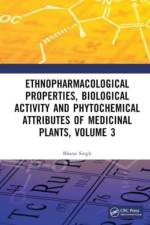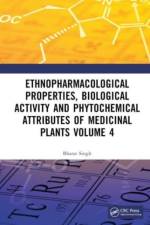von Bharat Singh
250,00 €
This book covers the morphological characteristics, ethnopharmacological properties, isolated and identified structurally diverse secondary metabolites, biological and pharmacological activities of medicinal plants. Ethnopharmacology is the systematic study of folklore/traditional medicines, which continue to provide innovative drugs and lead molecules for the pharmaceutical industry. In fact, plant secondary metabolites, used as a single molecule or as a mixture, are medicines that can be effective and safe even when synthetic drugs fail. Therefore, the description of these secondary metabolites as well as methods for the targeted expression and/or purification is of high interest.In addition to surveying the morphological features, ethnopharmacological properties, biological and pharmacological activities, and studies of clinical trials, this book offers a comprehensive treatment of 56 plant species. It also presents the cell culture conditions and various methods used for increasing the production of medicinally important secondary metabolites in plant cell cultures.This volume: - Provides the morphological features, habitat, and distribution of each species of 56 genera selected from the different regions of the world. - Presents ethnopharmacological applications of various species of included 56 genera of this book. Different species of 56 genera are used for ethnomedicinal uses by the people of various countries of the world.- Describes structures of various secondary metabolites identified in 56 plant species together with their biological and pharmacological activities.- Discusses strategies of secondary metabolites production, such as organ culture, pH, elicitation, hairy root cultures, light, and mutagenesis.- Provides a complete overview of each species of 56 genera and complete information up to year 2022.Ethnopharmacological Properties, Biological Activity and Phytochemical Attributes of Medicinal Plants is an important book for undergraduate and postgraduate students, pharmacologists, phytochemists, Ayurvedic practitioners, medical doctors, and biotechnologists interested in the ethnopharmacological properties, phytochemistry, and biological and pharmacological activities of plants.




